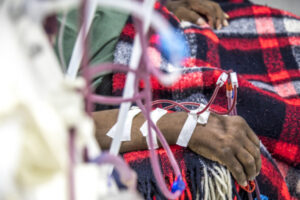
In the aftermath of the killing of 19 children and two adults in an elementary school in Uvalde, Texas, there is a lot of discussion — and argument — about what we should do to prevent shootings like this from happening.
In the midst of all the back and forth between banning guns and arming teachers, there is an important question that cannot be lost: what does it do to a generation of children to grow up knowing that there is nowhere they are safe?
There is increasing research that growing up amidst violence, poverty, abuse, chronic stress, or even chronic unpredictability affects the brains and bodies of children in ways that can be permanent. These adverse childhood experiences put the body on high alert, engaging the flight-or-fight responses of the body in an ongoing way. This increases the risk of depression, anxiety, and substance abuse, but it does so much more: the stress on the body increases the risk of cancer, heart disease, chronic disease, chronic pain, and even shortens the lifespan. The stress on the brain can literally change how it is formed and wired.
Long-term effects on a generation
Think for a moment about what this could mean: an entire generation could be forever damaged in ways we cannot change. The ramifications, not just for their well-being but for future generations and our work force and health care system, are staggering: stress like this can be passed on, and affects parenting.
As we talk about arming teachers and increasing armed police at schools, it is important to remember that research shows that the more guns, the higher the risk of homicide. It’s also important to remember that many children die every year from unintentional shootings in the home. In fact, guns have overtaken motor vehicle accidents as the leading cause of death in children. The idea of “arming the good guys” is an understandable response to horrible events like Uvalde, Parkland, and Sandy Hook, but the data would suggest that it may not be the most successful one. Violence begets violence, and guns aren’t reliably used the way we want them to be.
It’s not just guns, of course. There are other stressors, like poverty, community violence, child abuse, racism and all the other forms of intolerance, and lack of access to health care and mental health care. The pandemic has likely forever altered this generation in ways we cannot change, too.
The communities our children are growing up in and the world they are growing up in are increasingly becoming scary places. If we care about our children, if we care about our future, we need to stop fighting among ourselves and come together to create solutions that support the health and well-being of children, families, and communities. We need to nurture our children, not terrify them.
About the Author

Claire McCarthy, MD, Senior Faculty Editor, Harvard Health Publishing
Claire McCarthy, MD, is a primary care pediatrician at Boston Children’s Hospital, and an assistant professor of pediatrics at Harvard Medical School. In addition to being a senior faculty editor for Harvard Health Publishing, Dr. McCarthy … See Full Bio View all posts by Claire McCarthy, MD



